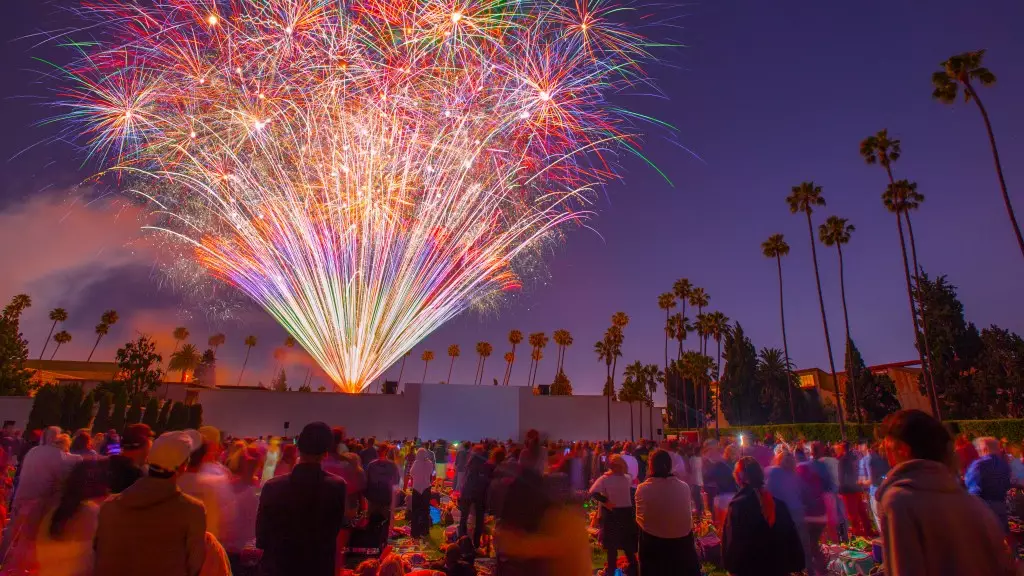As Los Angeles descends into the sweltering embrace of summer, the atmosphere crackles with both fervor and unease. Protests resonate through the streets in response to ICE raids, and the scars left by recent wildfires still smolder in the public consciousness. In stark contrast to this turmoil, cinematic experiences at venues like Hollywood Forever Cemetery offer Angelenos an escape — a sanctuary where film transcends mere entertainment. Creative director Navid Sinaki, marking a decade with Cinespia, speaks to the remarkable role cinema plays in weaving together a community facing intense sociopolitical challenges.
Sinaki describes Hollywood Forever Cemetery as his “happy place,” an ironic sentiment considering its serene yet somber function. Here, death and art intersect, evoking a childlike wonder amidst the backdrop of a bustling metropolis. People come together not only to watch films but to celebrate life, community, and resilience. The cemetery, albeit unconventional, stands as a testament to the collective spirit of a city that thrives on chaos and creativity. Sinaki’s assertion that the screenings provide a “transformative experience” encapsulates the essence of what it means to gather, even in the darkest of times.
The Weight of Programming
Expectations run high when it comes to curating screening experiences that resonate with an audience. Sinaki accepts this “revelatory responsibility” with humility, recognizing that the choice of film can either uplift or introspect. The pressure to craft an unforgettable evening, particularly with highly anticipated screenings like the cult classic *Showgirls*, becomes almost palpable. It poses an existential question: what emotions do we seek from cinema?
Sinaki illustrates the dual nature of film programming. Some nights call for raucous celebration; others require a more reflective atmosphere. This delicate dance of emotional engagement speaks to the heart of cinema itself: it is a mirror reflecting society’s triumphs and tribulations. The careful balancing act of audience expectation and narrative closure adds layers to the viewing experience, emphasizing the profound impact that cinema can exert not just on individual viewers, but on the community as a whole.
Cultural Significance in Turbulent Times
In a climate where political tensions escalate, the ability of film to amplify community bonds becomes crucial. Sinaki’s acknowledgment of the “palpable warmth” experienced amongst attendees highlights the communal nature of cinema — it invites individuals to share in an experience that extends beyond simple escapism. As the city grapples with investigations into governmental overreach and civil unrest, these moments of collective joy become a reaffirmation of shared humanity.
Amidst palpable anger and frustration—showcased by LA Mayor Karen Bass’s recent dusk-to-dawn curfews and the deployment of National Guard troops—entering a cemetery for an outdoor film screening feels like an act of defiance against despair. It embodies an assertion of normalcy and humanity in the face of overwhelming forces that seek to divide and control. These gatherings provide a unique sanctuary for citizens to reclaim joy amid uncertainty.
Art as a Dialogue
The intersection of art and activism emerges as particularly powerful in such a tumultuous landscape. The creative decisions made for events like Cinespia’s screenings, whether it’s the creative setup for themed photo booths or film selections, offer a chance to engage audiences in meaningful dialogue. Sinaki’s playful banter about incorporating a stripper pole for *Showgirls* screening illustrates the unconventional paths that discussions around entertainment can take. This highlights a narrative flexibility that is as much about entertainment as it is about the dialogue it can provoke.
The contrasting political climate, marked by tough gubernatorial critiques of federal authority, brings an urgency to these screenings. As Governor Gavin Newsom highlights the threat of overreach, the act of gathering for a film screening becomes an assertion of unity against external chaos. It reinforces the notion that culture exists as a form of resistance, capable of cultivating camaraderie, empathy, and solidarity even when tensions run high.
Through cinema, the people of Los Angeles carve out a space where communal experiences can flourish, even in the face of socio-political upheaval. For many, these film screenings become more than a chance to revel in nostalgia; they morph into immersive experiences that remind us not only of our shared struggles but also of our shared joys.

